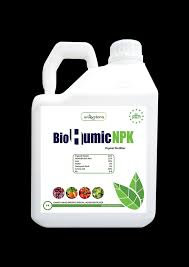
Eyl . 25, 2024 17:16 Back to list
making npk fertilizer manufacturers
The Process of Manufacturing NPK Fertilizer A Comprehensive Overview
NPK fertilizer, which consists of three essential nutrients—Nitrogen (N), Phosphorus (P), and Potassium (K)—is a fundamental component in modern agriculture. These fertilizers play a crucial role in enhancing soil fertility and promoting healthy plant growth. The manufacturing of NPK fertilizer involves a series of intricate processes that ensure the right balance and quality of nutrients are achieved. This article provides an overview of the methods employed by NPK fertilizer manufacturers and highlights their importance in sustainable agriculture.
1. Understanding NPK Fertilizers
NPK fertilizers are categorized based on their nutrient content, which is expressed as three numbers, representing the percentage of nitrogen, phosphorus, and potassium in the mixture. For example, a fertilizer labeled as 10-20-10 contains 10% nitrogen, 20% phosphorus, and 10% potassium. Each of these nutrients contributes uniquely to plant health nitrogen is vital for leaf growth, phosphorus promotes root development and flowering, while potassium enhances overall plant vigor and disease resistance.
2. Raw Materials Used in NPK Fertilizer Production
The production of NPK fertilizers begins with the careful selection of raw materials. Manufacturers typically source a variety of natural and synthetic inputs, including
- Urea (for nitrogen) - Ammonium phosphate or superphosphate (for phosphorus) - Potassium chloride or sulfate (for potassium)
These materials are chosen for their nutrient profiles, solubility, and availability. Manufacturers also consider regional agricultural needs and soil deficiencies when formulating specific NPK blends.
3. The Manufacturing Process
The production of NPK fertilizers can be categorized into two main processes granulation and blending.
Granulation
In this process, the raw materials are mixed in precise proportions and subjected to heat and moisture to form granules. The granulation method usually involves
making npk fertilizer manufacturers

- Pre-reactor Stage Here, the nitrogen source and phosphate are reacted together to produce ammonium phosphate. - Granulation Stage The produced ammonium phosphate is then mixed with potassium sources in a granulator, where water is added to create granules. These granules are then dried to remove excess moisture. - Cooling and Screening After drying, the granules are cooled and screened to achieve uniform size and quality, ensuring proper application in the field.
Blending
In contrast to granulation, blending involves mixing different nutrient sources without any chemical reactions. This method is comparatively simpler and is often employed for bulk production of specific NPK formulations. Manufacturers blend raw ingredients in desired ratios and then package the final product.
4. Quality Control
Quality control is paramount in NPK fertilizer production. Manufacturers employ strict testing procedures to ensure that the nutrient compositions meet industry standards and client specifications. This involves
- Routine sampling and testing of raw materials - In-process checks during production - Final product testing to confirm nutrient levels, solubility, and absence of contaminants
Quality fertilizers lead to better crop yields and healthier plants, which ultimately benefit farmers and the agricultural industry.
5. Environmental Considerations
With growing awareness of environmental sustainability, NPK fertilizer manufacturers are increasingly adopting eco-friendly practices in their production processes. This includes reducing waste, recycling by-products, and improving the efficiency of nutrient release in the soil. The focus is on developing slow-release fertilizers that minimize nutrient runoff and enhance soil health.
Conclusion
The manufacturing of NPK fertilizers is a complex yet essential process that underpins modern agriculture. Given the increasing global demand for food and the challenges posed by climate change, NPK fertilizers will continue to play a vital role in enhancing crop production and ensuring food security. As manufacturers strive for higher quality and more sustainable products, the future of NPK fertilizers looks promising, supporting both farmers and the environment.
-
Premium Organic Manure Compost for Eco Gardens
NewsAug.01,2025
-
Organic 10-10-10 Fertilizer | Balanced Plant Nutrients
NewsJul.31,2025
-
Premium Amino Acid Fertilizer | Rapid Plant Growth Booster
NewsJul.31,2025
-
10 10 10 Fertilizer Organic—Balanced NPK for All Plants
NewsJul.30,2025
-
Premium 10 10 10 Fertilizer Organic for Balanced Plant Growth
NewsJul.29,2025
-
Premium 10 10 10 Fertilizer Organic for Balanced Plant Growth
NewsJul.29,2025
